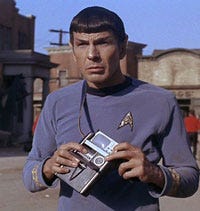Body Computing Visionary Leslie Saxon on the Convergence of Consumer Products and Medical Technology
The annual LifeScience Alley conference held in Minneapolis featured in early December featured a keynote talk titled “Body Computing and Patient-Networked Technologies” by Leslie Saxon, MD, chief, division of cardiovascular medicine at the USC Keck School of Medicine.Bill Betten, UBM TechInsights’ senior technical advisor, medical devices was there and he was kind enough to share his notes with us, which we provide here:
December 29, 2011
 The annual LifeScience Alley conference held in Minneapolis featured in early December featured a keynote talk titled “Body Computing and Patient-Networked Technologies” by Leslie Saxon, MD, chief, division of cardiovascular medicine at the USC Keck School of Medicine.
The annual LifeScience Alley conference held in Minneapolis featured in early December featured a keynote talk titled “Body Computing and Patient-Networked Technologies” by Leslie Saxon, MD, chief, division of cardiovascular medicine at the USC Keck School of Medicine.
Bill Betten, UBM TechInsights’ senior technical advisor, medical devices was there and he was kind enough to share his detailed notes from the conference with us, which we provide below:
The main themes of the talk included what is happening in the networking of technologies, the impact of smart phone technology on medicine, and the potential outcomes of that interaction.
One of the impediments to potential change in the current, dated model of medical delivery is the reluctance of current medical establishment to abandon the current model.
Smartphones are set to overtake PC shipments in 2012. Dr. Saxon indicated that they would be a primary tool in medical treatment in the future. USC asked the following questions in a 2010 survey: “How likely are you to use mobile data services for the following reasons: Keep track of important personal and wellness data? Manage a nutrition and Exercise diary?” High responses were 43% and 38% in Singapore; Low responses of 10% and 11% in Japan; U.S. responses were 29% and 26% respectively. Interesting question is whether the Internet is “sticky” enough to really change habits in terms of access. Study by Kliner Perkins shows that social networks surpassed Internet portal use in June 2011.
Dr. Saxon also showed the following chart from IBM, which shows a flattened normalized distribution curve with “consumer electronics companies” on the left and “medical device makers” on the right, with a very large central portion labeled “Battleground for Adopters.” It is that large gray zone in the middle that will define what happens in the medical arena. It is also the area of confusion that is not yet defined from the regulatory perspective either.

USC’s Body Computing Center is uniting medicine, engineering, communications, and entertainment into a new paradigm—connected healthcare. The focus is on personalized applications that play toward the social aspect, but with experience personnel to examine the collected data. She referenced “The Measured Life,” a site run by MIT oriented toward collection of information by individuals about themselves.
She referenced a number of companies and devices as evidence of the trend for the change in devices. Many of these are still under development and are clearly not yet “medical” devices. They included Sotera, the “Patient Advisory Module” collaboration between USC and St. Jude Medical, as well as “Altitude” from Boston Scientific.

Spock from Star Trek holds a tricorder device.
She mentioned the medical “X Prize” of $20 million for the equivalent of a Star Trek tricorder that could monitor patients as well as board certified physicians. The communicator seems to have arrived in the guise of the cell phone, so perhaps we’ll see the tricorder as well.
She then moved on to discuss social websites such as “LiveStrong” and others that are actively engaging people in changes ranging from health monitoring to quitting smoking. Key reasons that they work are that they provide daily tracking, a strong community of support, positive feedback, and simplicity.
She then discussed sports medicine and gaming and the use of sensors and quasi-medical devices in those areas. There were lots of examples including a couple ECG applications and Dr. David Albert’s AliveCor product.
In conclusion, she commented that she didn't know the answer to where all of this was going, particularly with regard to the regulatory issues. However, she said that she would utilize the information gathered and commented on assessing the condition of someone from India by way of Africa via a smart phone device. My impression is that this will be the proverbial avalanche coming and the FDA is standing in the way. It will be interesting to see what happens.
—Bill Betten and Brian Buntz
Related Content:
You May Also Like


